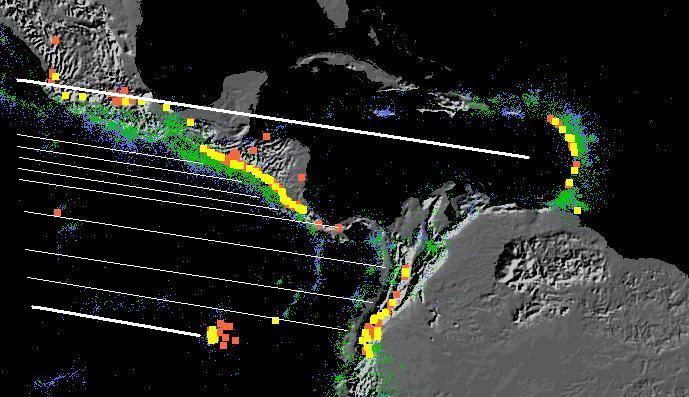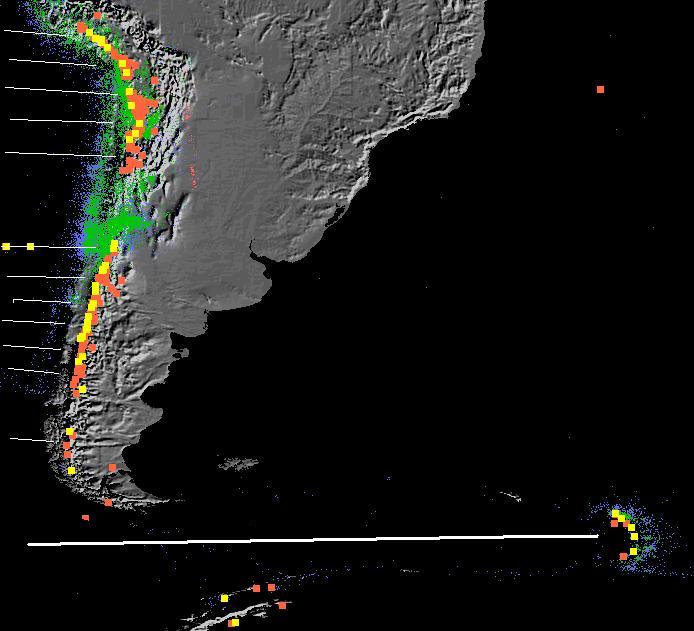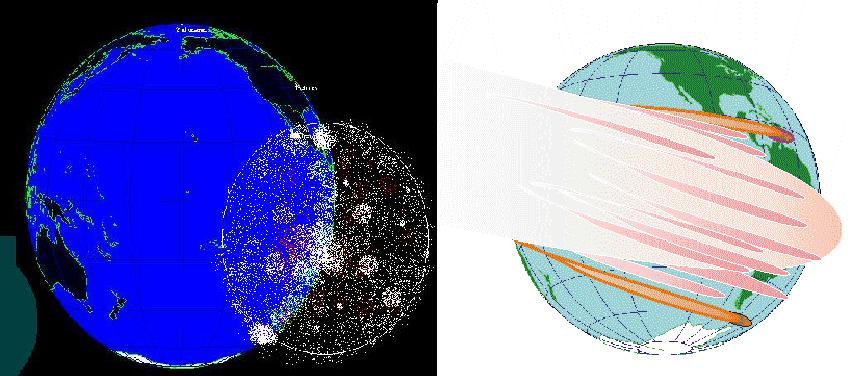|
A Digital Elevation Revelation 
The Crater depicted in the above Digital Elevation Model, is at the tip of South America and the groove has actually severed the previous connection with Antarctica, and deformed and stretched the former land masses to the volcanic arc of the South Sandwich Islands. This Groove Crater is very similar in apparent erosive age and orientation to the Caribbean groove. Legends seem to tell us there were two main impactors of denser nucleii, and if the Caribbean groove is one, then this is the other. 

The images above are from NOAA and depict earthquake activity and volcano locations in Central and South America. The are annotated to show the impact trajectory.
We can make a connection that the volcanic and seismic activity in the volcanic arcs of the West Indies and South Sandwich Islands are the result of large comet nuclei impacts in the Venezuelan Basin and Drakes Passage. We have become aware that a comet will breakup into millions of various sized nuclei and coma gases. This has been shown in recent studies of comets, and this mass of matter is then dispersed over a large volume of space. It begins to become clear that the volcanoes and seismic activity that occurs between the major impact points are also impacts, minor in comparison, but still constitute collisions of major amounts of mass at high velocity. The impact and penetration of a speeding mass into the lithosphere of the planet will cause serious heating, cavitation, vaporization and melting of the rocks that form the crust. This will create magma. This melted mass, being relatively hotter, less viscous and less dense than the rock above, will coalesce and rise, as heat rises, through the cooler levels of the lithosphere to emerge at the surface as the lava, steam and cinder ejecta of a Volcano.
| Volcano making |

|
|
|

The above globe presents a broad overview of the comet cloud and the relatively dense material and nuclei, with the densest shaded to red. Below is a graphic of what the impact would look like from directly behind the comet as it tore into the pacific ocean and skimmed the surface of the continent of South America. The directional vector of the comet and the Earth in this image are assumed to be the same, only the velocity of the comet is overtaking the Earth at 13 1/2 to 14 km/sec. Lower right is my artistic attempt at creating the vision.

|
| The Snowball from HELL ! |
|



